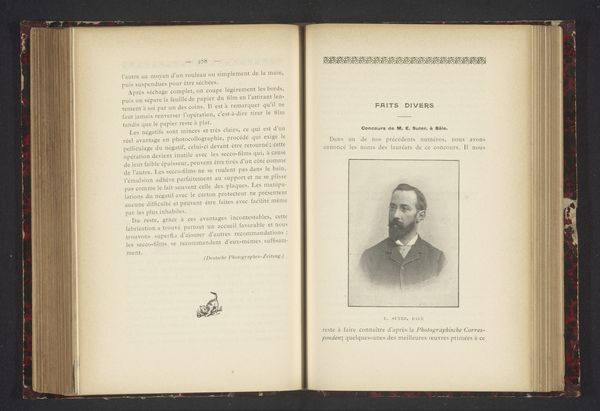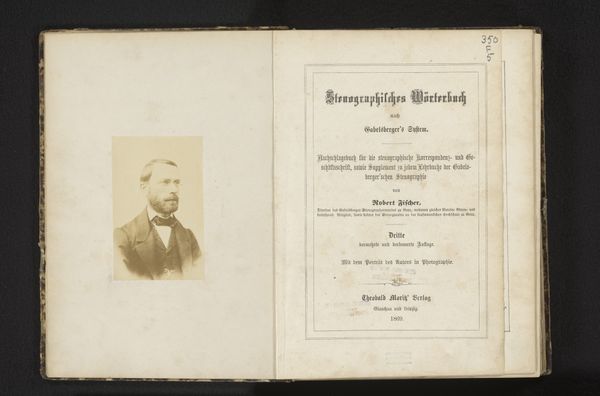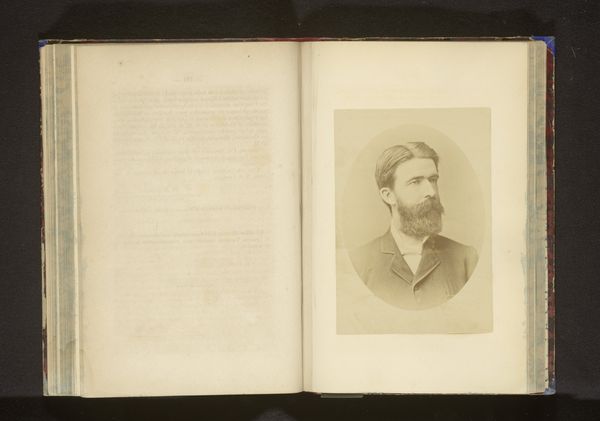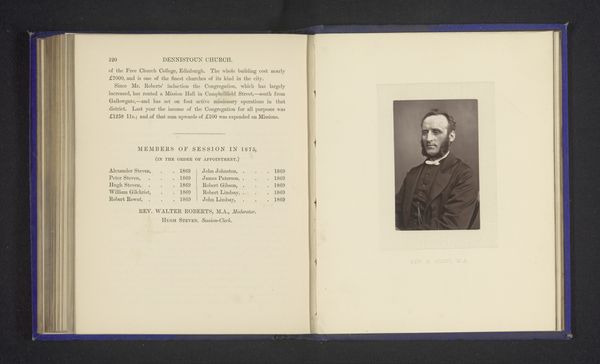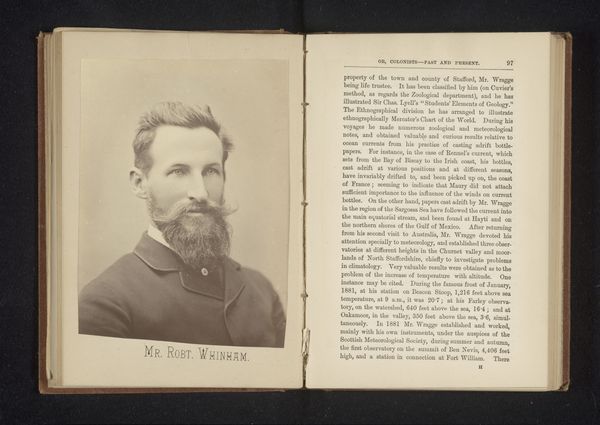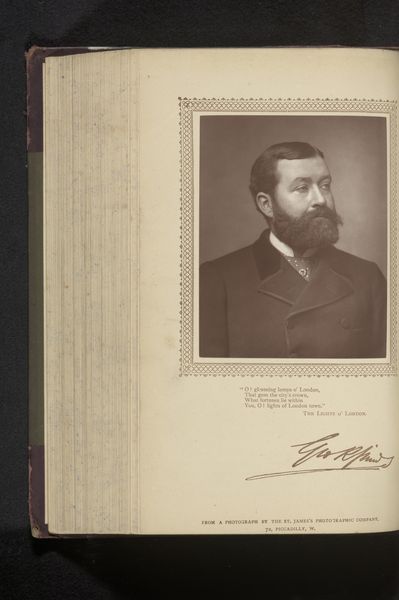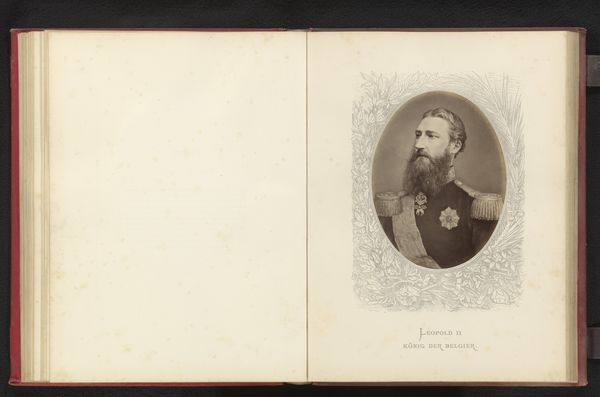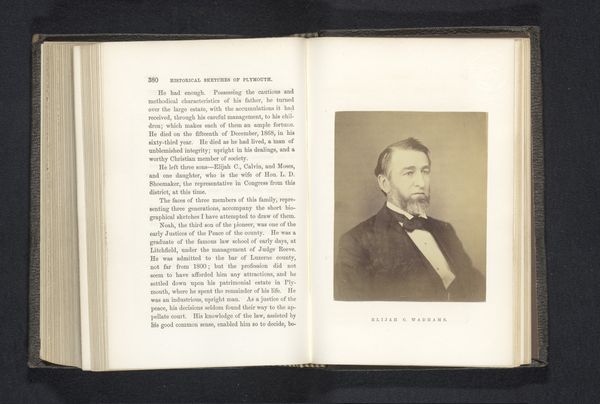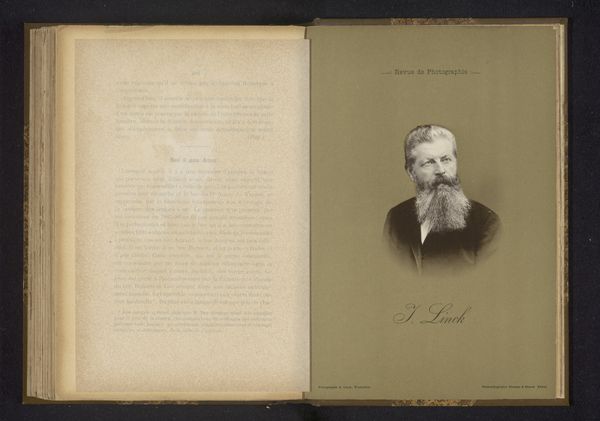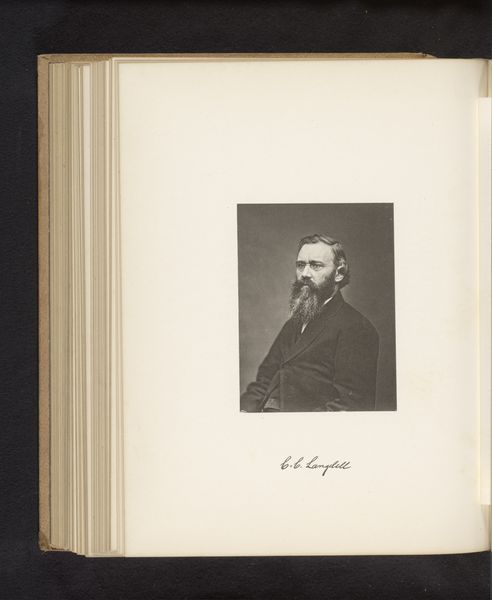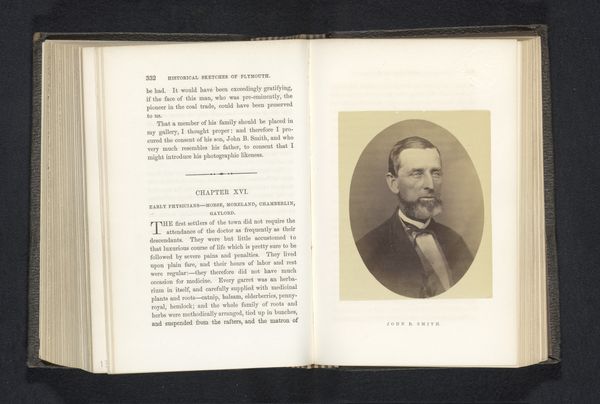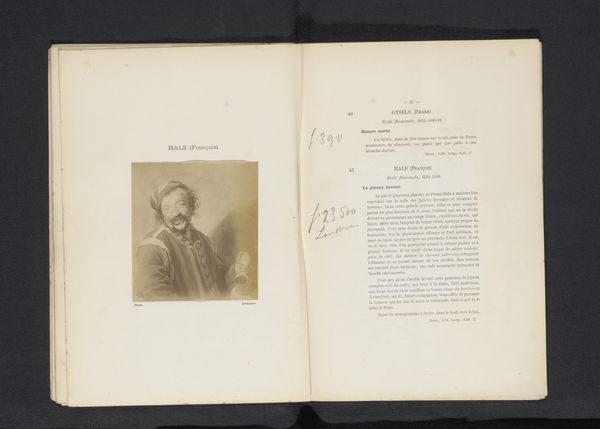
Dimensions: height 166 mm, width 111 mm
Copyright: Rijks Museum: Open Domain
Editor: Here we have Nadar's portrait of Jean-François Millet, it's an albumen print from before 1893, beautifully preserved in what looks like an original album. The lighting is soft, highlighting Millet's beard. How do you interpret this work in terms of its historical context? Curator: The choice to present Millet, the painter of rural labor, through the then-modern medium of photography speaks volumes. Nadar, known for photographing Parisian luminaries, here elevates Millet. What does it mean to capture someone associated with the countryside using a technology emblematic of urban modernity? Editor: So it's about contrasting worlds colliding? Curator: Precisely. Photography democratized portraiture but it also became associated with celebrity. Millet's serious expression invites us to contemplate the shifting social landscape and the representation of the working class in art. Think about Millet's paintings—what values do you think Nadar is trying to capture here? Editor: I see the connection now. It’s not just about capturing Millet’s likeness; it’s about positioning him and his work in the broader cultural conversation. A statement on the value of the working class, captured for posterity. Curator: Yes, the photographic process itself transforms the mundane to monumental, suggesting an inherent dignity in Millet's subject matter. Ultimately Nadar creates a compelling interplay between the artist, his values, and the evolving media landscape. Editor: That tension makes this far more compelling than just a portrait! Thank you.
Comments
No comments
Be the first to comment and join the conversation on the ultimate creative platform.
